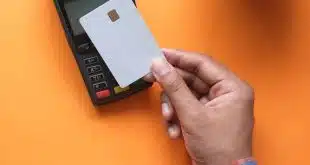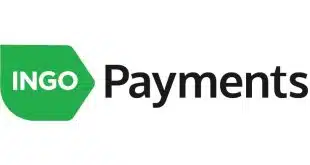The 120-year-old automobile is getting a payments makeover.
Automaker American Honda Motor Co. Inc. last week demonstrated an in-vehicle payments system for parking and paying for fuel at the 2017 CES, a consumer electronics exhibition in Las Vegas. Honda held the demonstration in conjunction with Visa Inc., Gilbarco Veeder-Root, which makes fuel pumps, and IPS Group Inc.
The demonstration, captured in this video shows a car pulling up to an electronic parking meter. The driver confirms the parking spot on the Honda minivan’s display screen and selects the amount of time. The next screen shows the last four digits of the payment card, the charge for parking, and a transaction fee. The driver presses “Activate Meter” to pay. In Honda tests, the car and the meters use a Bluetooth low energy connection to communicate.
This proof-of-concept will be put to a further test, Avid Arumugam, senior vice president of the Internet of Things at Visa, tells Digital Transactions News. IPS has approximately 300,000 parking meters able to participate in an expanded trial, Arumugam says.
Paying for fuel will be similar to paying for parking. Once the car is next to the pump, the dashboard display indicates the driver can pay from the car. The driver can select an amount to spend or fill up the tank. A confirmation appears to complete the payment before fueling actually begins.
Visa, which is working with multiple automakers and transportation vendors on in-vehicle payments, is providing tokenization services for the test, which uses a token associated with the car, Arumugam says. This test, and others, may use different methods, such as requiring user authentication on a smart phone connected to the car, he says. “We are working with different OEMs to understand what’s best for consumers,” he says. “Use cases depend on what consumers want.”
These use cases, especially for activities like paying for fuel, will have to offer something different, with less effort for consumers. That might include offers displayed on the car’s screen, Arumugam says.
Getting merchants interested in in-vehicle payments will require a channel to the consumer, says Michael Moeser, director of payments at Javelin LLC, a Pleasanton, Calif.-based payments consultancy. “It creates an avenue for the retailer to connect with the consumer,” Moeser says. “Now, as the consumer is filling up his car, the merchant can offer not just a car wash, but coupons for something in the store.”
It may also be a way to offer access to loyalty and rewards programs, he says. Other uses cases could involve an order-ahead capability paid for in-vehicle.
In-car payments also represents new growth for payments providers, Moeser says. With electronic parking meters, cities can remove cash from their systems. “The minute you start taking cash out of the system, it creates one less pain point,” Moeser says. “It allows the city to charge more.”
For example, a driver parking in a cash-only spot may find the meter with minutes left from the previous driver, lowering how much they’ll have to spend. Electronic parking meters can eliminate this residual parking time, ensuring fees are paid, Moeser says.
Experiments with in-vehicle payments are indicative of a proprietary bent in how automakers view the dashboard screens of their vehicles, says Richard Crone, principal at San Francisco-based Crone Consulting LLC. “Car makers are still going to make a run for the roses here,” Crone says. “They want to protect their own walled garden.”
Automakers view their organizations as part of the transportation industry, and not solely as manufacturers, Crone says. Because of that, they view information, such as knowing a vehicle’s location, as a critical asset. “They don’t want to be a dumb pipe,” he says.
New smart phones are constantly released, while the refresh rate on cars and trucks is less frequent, Crone says. So what’s at play with in-vehicle payments, for automakers and payments companies, is the notion of being first to get a consumer enrolled in a system, he says.
That’s especially important to card issuers because consumers are likely to resist changing the card they initially use, Crone says. In-vehicle payments, like mobile payments, is a ploy to increase the distribution points of electronic payments.
For token providers, in-car payments means more tokens for issuers to use. “This is an extension of Visa Checkout,” Crone says.
It also furthers the Visa brand, something that could sap issuer brand presence among consumers as payments develop concurrently with the Internet of Things, he says.
“That’s why [JPMorgan Chase & Co.] launched Chase Pay,” Crone says. “They know that ultimately for them to extend new product offerings into the wild, they have to enroll the consumer and have a direct connection to them.” Coincidentally, Visa’s Arumugam was head of Chase’s next-generation payments products unit for four years until he joined Visa in May.
Other challenges stand in the way. Will a standard that works across automakers emerge that would make in-vehicle payments easy to use on all dashboards? It’s too soon to tell, Arumugam says. “We are focused on the payments side to help them figure out how they want it to work,” he says.
Arumugam, of course, is optimistic about the prospects. It took 50 years until Visa’s electronic payment network became ubiquitous and simple to use, he says. “In the same way, if you look at mobile payments, this only started two to three years ago.” That means all players must temper their enthusiasm for in-vehicle payments with the understanding there are multiple companies working on the service, he says.





